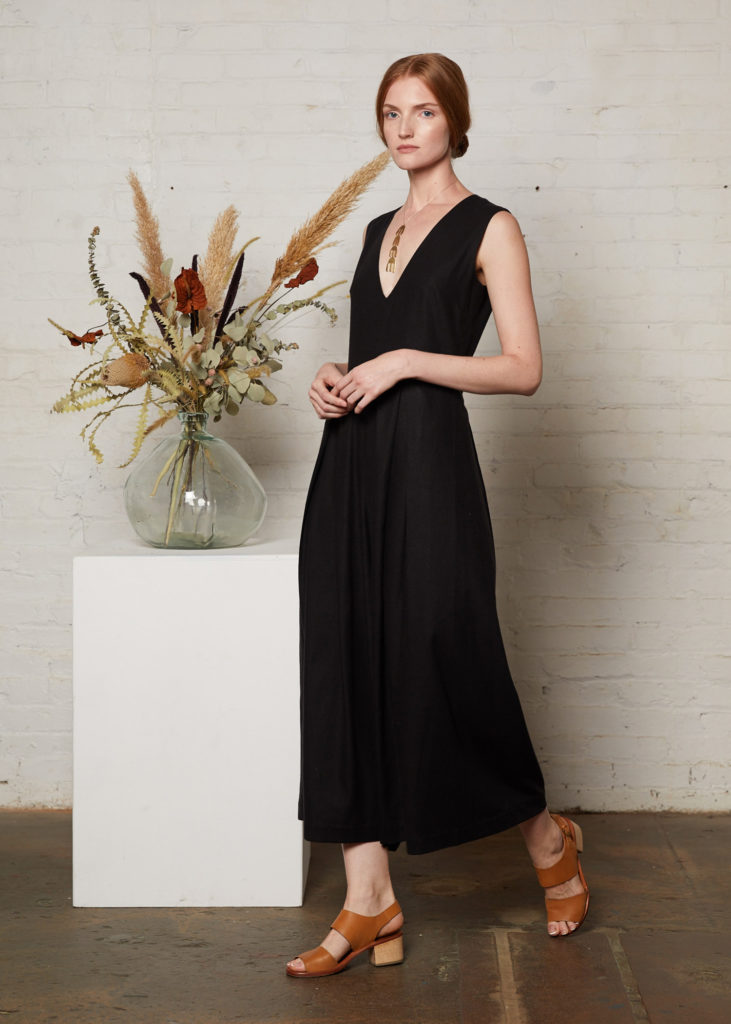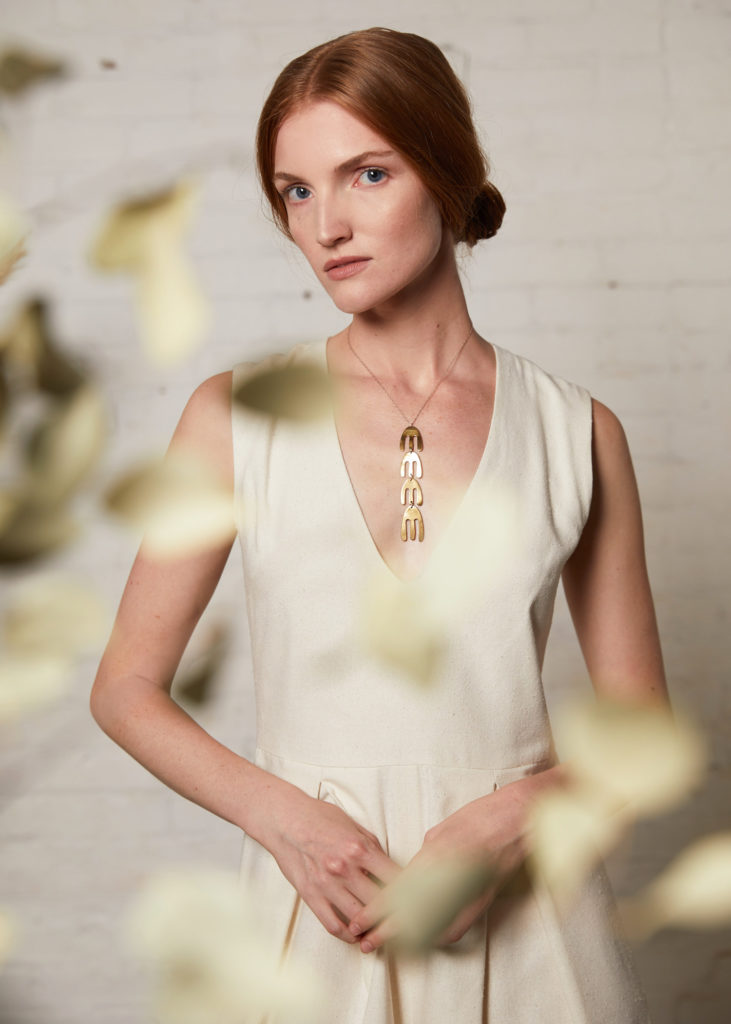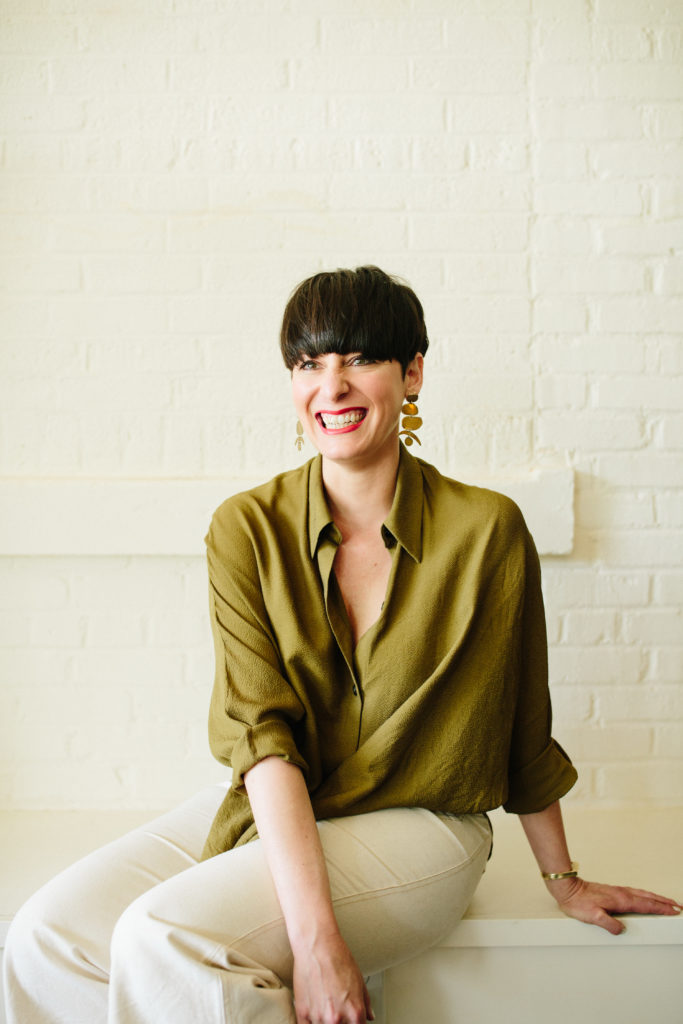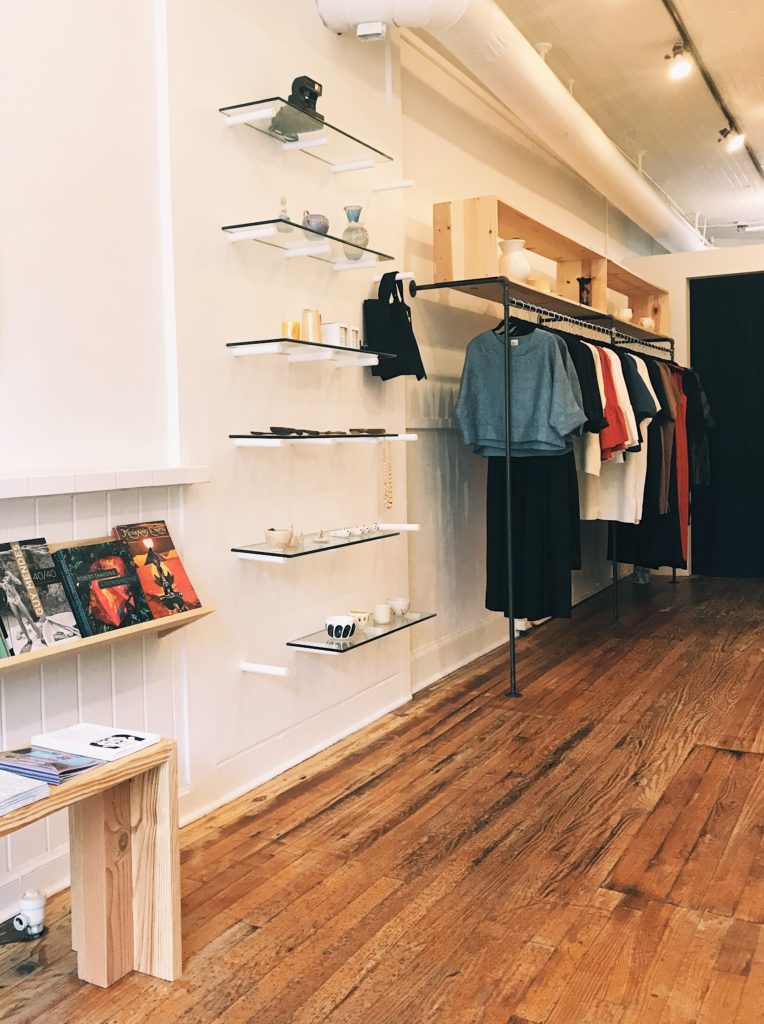One look at clothing designer Megan Huntz’s pieces, and you can tell they’re unlikely to go out of style any time soon.

Photo by Jamie Hopper
Her pieces are so elegant and classic that they withstand the test of time. Plus, they are just as functional as they are attractive — a philosophy she mostly adopted from studying industrial design at the Pratt Institute in New York.
After obtaining her Bachelor’s degree, Megan decided to pursue fashion, and jet-setted to Milan, Italy to earn her Master’s at Domus Academy. Despite spending much of her life abroad, she still found her way back to her hometown of Atlanta in 2010, with an enriched global perspective on design, to build her eponymous clothing line. Since then, she’s been a prominent figure in the slow-fashion movement, leveraging sustainable fabrics through ethical practices to produce her line.
You can find Megan’s collection on her website and at Westside Provisions’ Brick + Mortar — her new fall line will be fully released in September. Here, Megan talks to CommonCreativ about her international influences, finding inspiration in creative women, and her unwavering commitment to the slow-fashion movement.
CommonCreativ: How did your upbringing help foster your creativity?
Megan Huntz: As a young teenager, my family traveled quite a bit, and I became very interested in abstract painting after visiting a van Gogh exhibit in Amsterdam. I made a spiritual connection to the creative world, and since then I’ve never turned back.

Photo by Jamie Hopper
CC: Tell me about your educational background.
MH: With a love for fine art and all the possible majors to focus on at Pratt, I decided to go into industrial design. It was an unlikely choice for a devotee of abstract painting, but it gave me a foundation to conceptualize and think as a designer. I didn’t learn traditional pattern-making or sewing in a classroom. I honed my skills through a combination of intuition and the love for dressing up, mixed with a lot of experimentation and trial and error.
After Pratt, I got my first job and after that, I got my Master’s in fashion from Domus Academy in Milan. After several years in the Italian denim industry, I fully formed my point of view as a designer. I developed the main concept for my apparel and the visual language of my brand, and I chose to produce my line in the slow fashion way.
CC: What do you keep in mind when designing your pieces?
MH: A dress design is a very intimate thing. The fabric lays on the body and works in coordination with it. I never get tired of creating a dress — the way it can cover and reveal, drape and move is everything. My creativity is a spiritual practice for me, and my purpose is to bring joy and ease to anyone who wears my clothes and to share stories of true beauty.

Megan Huntz // Photo by Mary Caroline Russell
CC: Why did you decide to take the ethical, sustainable route when creating your line?
MH: Instead of turn a blind eye to the dangerous and disturbing conditions that people, who are basically enslaved, work in and the environmental impact of synthetic fabrics and disposable garments, I decided to manufacture my line responsibly. I am a slow-fashion designer to the core and deeply believe in the positive impact of sustainable, ethical and local manufacturing.
CC: What are your favorite materials to use?
MH: My favorite material to use is silk. I love all kinds: raw silk, silk crêpe de Chine, silk charmeuse, washed silk, silk jacquard. Despite the fact that silk can be delicate, it’s also very resilient. A well-constructed silk garment can last for decades. I also love to work with linen and cotton and wool. Natural fibers are the best.
CC: What’s your design process like?
MH: I’ve never been much for drawing, so my design process always begins with draping. I can see the idea for a pattern loosely in my mind then quickly construct it as a prototype. From there, it’s all about refinement and pattern making.
CC: What are your biggest inspirations?
MH: My biggest inspirations and references are always strong, creative women: Georgia O’Keeffe, Lee Krasner, Eva Hesse, Agnes Martin. Peggy Guggenheim is also a very inspirational figure for me. I not only appreciate her personal style, flair for the absurd and her visionary prowess, but I also relate to her love affair with Italy. After living there for so many years, the importance of style, romance, culture, and art in daily life remains with me always. Through my MH Muses, I am able to share these aspects of the fascinating and talented women around me.
 CC: What keeps you in Atlanta, and what are your thoughts on its creative scene?
CC: What keeps you in Atlanta, and what are your thoughts on its creative scene?
MH: Atlanta has a lot of talent. I think that having our own space and our own sense of creative freedom fosters the young and independent creators here. They are a source of constant inspiration to me, and they are my community. I think of how they move through life, where they’re going, what they’re doing. I think about garments that will make them feel their best, comfortable, chic, authentic selves. I aim to portray an external expression of what they have to offer on the inside.
CC: What are you currently working on?
MH: The design and development of my line is an endless process, full of climbs and new plateaus. I’m currently working on developing a new collection for spring 2019, in production for new summer arrivals, looking forward to trade shows in September, and always telling a story of a new muse — it’s a constant juggling act.
CC: What’s the most gratifying aspect of what you do?
MH: I just have to say that I’m so grateful for this work as a whole. It’s completely consuming, but it’s also so beautiful. It can bring me to my knees, but it keeps evolving me into a better human being. I share the sentiment of the Eva Hesse quote, “The thing makes itself.” As I’m making this work, it’s making me.





